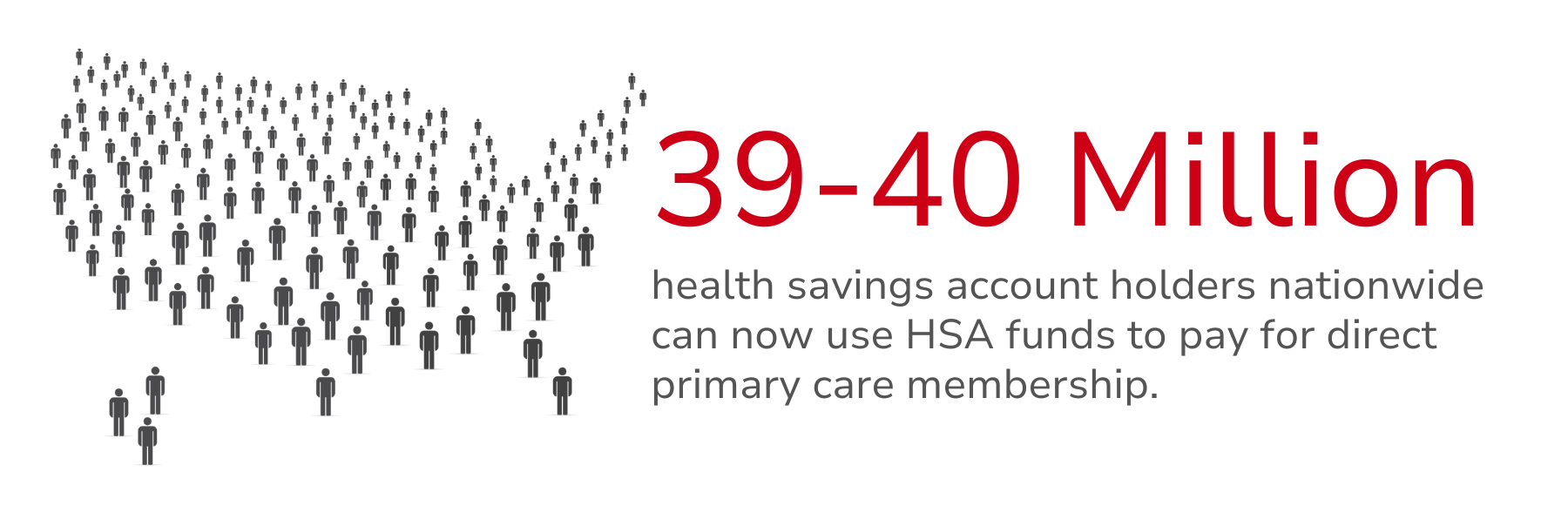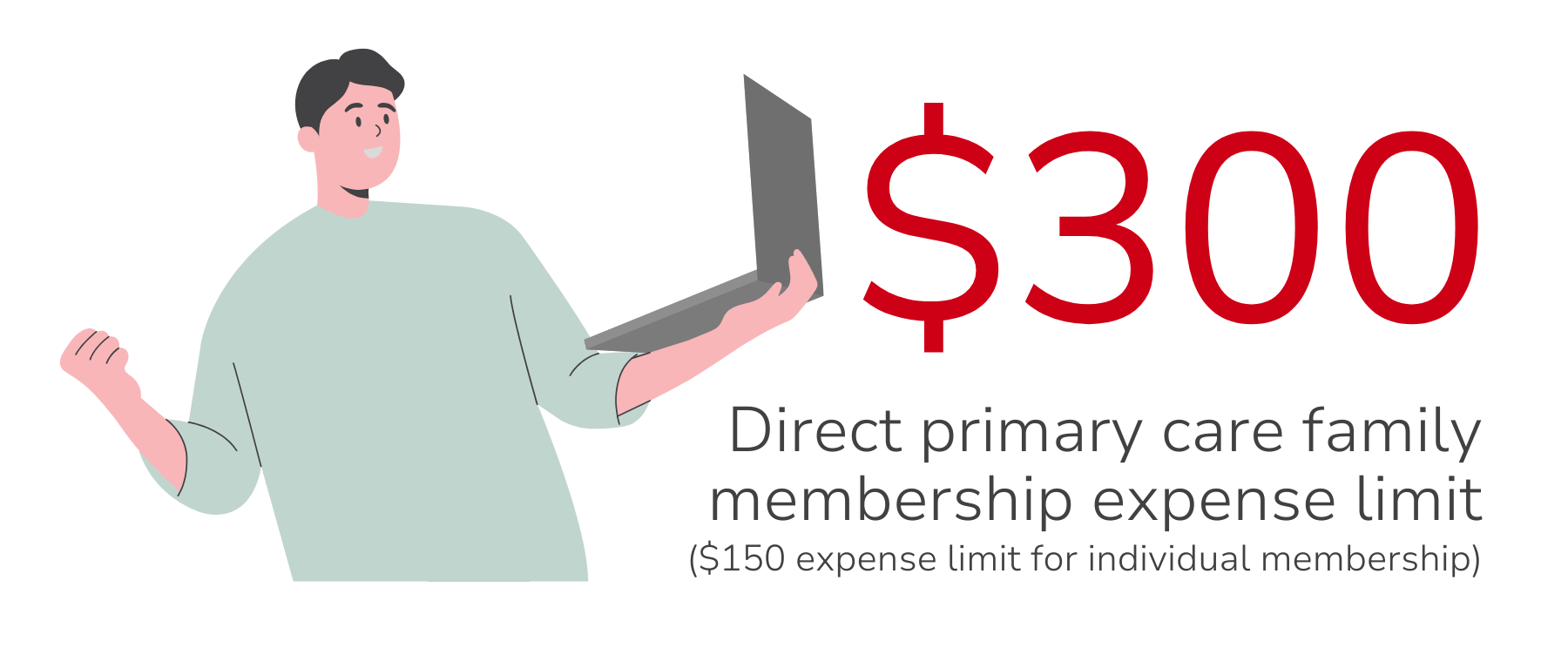New Law Benefits Health Savings Account Holders
The rules just changed. A major new law is opening doors for patient-friendly healthcare access. Here’s what it means for anyone using HSAs or Direct Primary Care.

In This Article
In July 2025, Congress passed the One Big Beautiful Bill Act, a comprehensive bill that seems to touch on all reaches of the economy. While the media and online chatter may be more focused on certain controversial parts of the new law, some patient-friendly changes are coming to the healthcare industry that may make life much easier for those using insurance alternatives for their access to affordable healthcare.
The effects of this bill won’t just be small changes to the already exhausting red-tape but paving the way for innovative healthcare access using more modern tools and provider models. The big change highlighted here is that under the new law, Direct Primary Care providers can now be used and paid for with Health Savings Accounts funds.
What is direct primary care?
Direct primary care (DPC) is a growing healthcare service provider model that acts as an alternative to traditional health insurance. Under this model, patients pay a flat monthly fee, that gives them direct access to a doctor or healthcare provider. It is a type of lower-cost membership or subscription that gives the patient easier access to their personal physician, while also typically enjoying same-day or next-day appointments, longer visits, and the freedom to reach out to their provider without extra bills coming in later.
For those that pay for DPC membership, the model feels more personal and less transactional, and because it operates outside the traditional insurance system, it’s a popular alternative for patients and even employers looking for affordable access to primary care. But because it’s a newer innovation, the broader medical industry hasn’t always known exactly what space it should occupy. Is it insurance? Is it technically a “medical expense”?
This grey area in categorizing this newer type of care has previously meant that more traditional funding vehicles like Health Savings Accounts (HSAs) could not interact with it, precluding many HSA holders from being DPC members at all. The new law helps clear this up and create an easy path for those who want to use both.
What is a health savings account?
A health savings account is one of the most practical tools available for managing healthcare expenses. It is a special type of savings account where you set aside money intended solely for medical expenses before taxes. Because the money goes into the account tax-free and comes out tax-free, when used for healthcare, your HSA dollars should stretch farther than money in your typical checking account.
An HSA is paired with high-deductible health plans, meaning to have an HSA typically also means having a traditional health insurance plan in place. These tax-advantaged funds can be used for healthcare expenses like doctor visits, prescriptions, procedures, and even medical equipment. But, due to the way the medical industry has categorized more modern healthcare tools and models, HSA funds have not been allowed for use with DPC services, until now. Under the new bill DPC services are considered a “qualified medical expense,” and DPC members can use their HSA monies to pay for their monthly membership fees.

More access to direct primary care
Previously, the relationship between DPC and HSAs has been frustrating for many trying to take advantage of easier access to care. Direct primary care practices clearly provide healthcare, but their services were not technically considered to be qualifying medical expenses. Instead, they were treated more like a type of insurance, which caused a conflict with HSA rules, which expressly state that HSA funds cannot be used to pay for insurance premiums.
This mismatch between DPC and HSA rules created two issues:
- You couldn’t use your HSA funds to pay for your DPC membership fees.
- Simply having a DPC membership could disqualify you from using an HSA entirely.
For those who value the convenience and affordability of DPC services, this was a tough tradeoff. You could either contribute tax-free money to an HSA or enjoy lower-cost access to healthcare, but not both.
The new law makes the whole dilemma moot by clearly categorizing regular DPC membership fees as qualified medical expenses.
How the new law is changing things
The One Big Beautiful Bill Act marks a considerable shift in how DPC fits within the larger medical industry and should help cement it as a fixture in modern healthcare options. For the first time, patients will be able to pay for their DPC membership directly with HSA funds, but like most complex issues, there are a couple caveats:
1. There are limits on how much HSA money can be applied to DPC expenses. Membership fees are capped at $150 per month for an individual, or $300 per month for a family membership (any membership that includes more than one person). If your DPC provider charges more than that, you’ll have to cover the difference out of pocket.
2. The law specifies that the DPC arrangement must provide “primary care services.” This phrase isn’t fully defined yet, but the legislation does make clear what doesn’t count (as of writing): procedures requiring general anesthesia, most prescription drugs—excluding vaccines and certain laboratory services—fall outside this definition. The main issue isn’t with standard primary care services themselves, but that bundling in additional services may disqualify a DPC practice from HSA eligibility.
Generally, most standard DPC providers should be HSA-eligible, but because it is still a relatively new model, and some DPCs offer services that others do not, you may want to make sure yours falls within the guidelines. Even with these caveats, though, this change makes DPC an accessible option for millions of people who already rely on their HSAs.

What's next?
This change introduced in the One Big Beautiful Bill Act should make DPC services accessible to many more people than before. A 2024 report by Devenir counted 39-40 million HSA holders nationwide, holding $147-155 billion in assets. These are account holders who previously couldn’t apply their tax-free money designated for medical expenses to DPC services. Now, starting on January 1, 2026, the way is clear.
Direct primary care was already gaining traction as an innovative healthcare model, with over 2,600 practices currently operating across the country. With HSA compatibility set up by the new law, that number is likely to grow even faster as both patients and providers recognize the advantages.
The effects won’t stop there. When large pieces of legislation make this many changes to entire systems, it will inevitably have wider impacts that are hard to predict. Employers may rethink benefit structures, insurers may adapt their offerings, and providers may continue to innovate how they deliver care. Many of these potential changes haven’t even been unpacked yet, by policymakers nor industry analysts.
One area we expect to see affected, and one we’ll explore in a later article, is how these new laws interact with telemedicine. Just like DPC, telehealth is now more clearly categorized and eligible for HSA funds, making modern healthcare more affordable and accessible.
Have questions about HSAs or direct primary care? Let’s talk.
Explore
SUGGESTED FOR YOU




